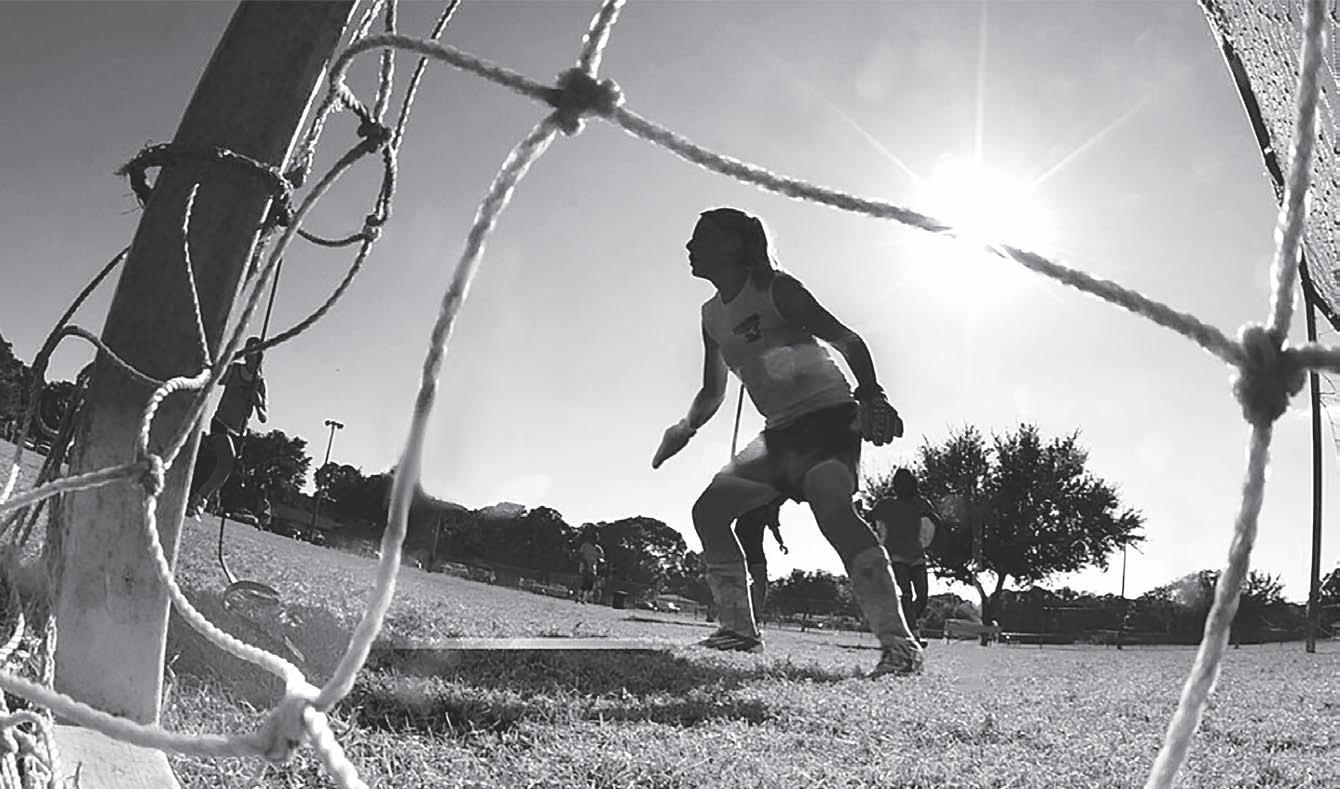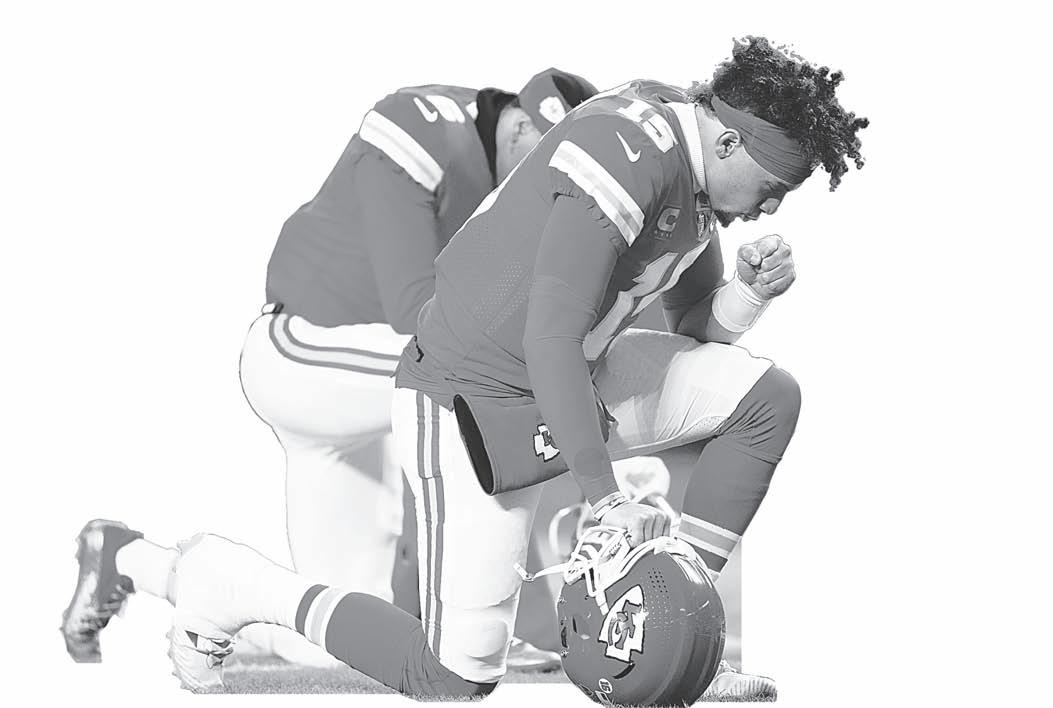
9 minute read
PhilSA, DENR to use space data to create database, monitor national reforestation
TWO government agen - cies are set to implement a project that will create a geospatial database of the country’s natural resources, and monitor the National Greening Program (NGP) through the use of spaceborne data.
The Philippine Space Agency (PhilSA) and the Department of Environment and Natural Resources (DENR) signed a memorandum of agreement (MOA) for the project at the DENR office in Quezon City on February 6, a PhilSA news release said.
PhilSA Director General Joel Joseph S. Marciano Jr. and Environment Secretary Ma. Antonia Yulo-Loyzaga signed the MOA for their respective agencies .
Titled, “Use of Satellite Imagery in the Creation of the National ENR Geospatial Database and other related Programs of the DENR,” the DENR will fund the project.
The two agencies will collaborate on the NGP Progress Monitoring and the National Resource Accounting Program (NRAP), which are seen to strengthen sciencebased policy-making.
For the NGP Progress Monitoring, PhilSA will generate monthly indices or maps on vegetation trends and biophysical parameters, and develop ways to detect forest disturbance and forest cover classification.
PhilSA will also assist to enhance the capability of DENR in monitoring NGP areas and other forests using satellite remote sensing, machine learning, artificial intelligence, and geographic information systems.
The space agency will develop methodologies for NRAP to produce annual mangrove extent maps and air quality maps.
In the following years, PhilSA will generate maps that cover other natural resources.
PhilSA will provide the technical capacity training for both activities to help DENR’s personnel adopt applicable space technologies for the project, and develop systems and tools to map, monitor and account the country’s natural resources.

“PhilSA welcomes this outstanding collaboration with the DENR. This is a concrete step in further strengthening the domestic space value chain, specifically the capacity to transform satellite imagery and spaceborne data into insights and actions for the conservation, protection, management, and restoration of our environment and natural resources,” Marciano said.
The partnership “highlights the socio-economic benefits and value from our country’s emerging space capabilities,” he added.
Yulo-Loyzaga, in her message, underscored the importance of the space value chain.
“The space value chain… actually helps us identify valuable ecosystems, habitats and ecosystems services’ potential that are critical to the country’s development. And we look forward to this particular endeavor, for being a small initial step but growing in terms of impact, importance, and resources towards building a resilient and inclusive Philippines,” she said.
The cooperation agreement with the DENR is also aligned with PhilSA’s Key Development Areas on Hazard Management and Climate Studies, where the country develops and utilizes space science and technology applications to enhance hazard management and mitigation strategy and ensure the nation’s resilience to climate change.
It is also aligned with Space Research and Development to accelerate scientific growth in the areas of space science and technology and other allied fields, the news release said.
PhilSA is likewise mandated under Republic Act 11363 to assist other national government agencies and the private sector perform their functions and duties through the utilization of space science and technology applications.
ORLANDO, Florida—
Facing blowback , the director of Florida’s high school sports governing body is backing away from using an eligibility form that requires female athletes to disclose their menstrual history in order to compete.
I nstead, the executive director of the Florida High School Athletic Association is recommending that most personal information revealed on medical history forms stay at the doctor’s office and not be stored at school.
The association’s board has an emergency meeting recently to vote on whether to adopt the four-page form— which would remove questions that force student-athletes to share details about their menstruation cycles in order to be participate in sports.
M any other states ask or order female athletes to include details about their menstruation cycles with other health information.
The Florida association’s spokesperson has said the proposed changes were not in response to concerns about transgender athletes competing in women’s sports, as some social media users claim.
F lorida Gov. Ron DeSantis in 2021 signed a bill barring transgender girls and women from playing on public school teams intended for student athletes identified as girls at birth, which put DeSantis and the state into the national cultural debate over transgender rights.

Under the new Florida recommendation, answers to additional questions about mental health, alcohol and drug use, and family health history would stay in the offices of the health care practitioner who conducted the medical screening.
A n earlier version of the form, which had mandatory questions about students’ menstrual histories, had been recommended by an advisory committee of the association. Committee members said making the menstrual cycle questions mandatory rather than optional was consistent with national guidelines for sports physicals developed by the American Academy of Family Physicians, the American Academy of Pediatrics, the American College of Sports Medicine and other groups. The national guidelines said menstrual history is an “essential discussion for female athletes” because period abnormalities could be a sign of “low energy availability, pregnancy, or other gynecologic or medical conditions.”
However, the earlier version of the form “created concerns and questions from parents, school district administrators, school board members and coaches regarding the health privacy of student-athletes,” according to the Florida association board’s Thursday meeting agenda.
“ Therefore, this recommendation provides pertinent medical history to the qualified health care practitioner and gives schools the medical authorization necessary for allowing athletic participation, while the protecting the privacy of the studentathlete,” the agenda item said.
Thursday’s meeting was being held after a group of Democratic state lawmakers sent a letter this week to John Gerdes, the association›s president, calling the reporting requirements in the earlier proposed form “highly invasive.” The letter said, “no girl should be forced to disclose her bodily functions to someone who is not her mother, father, caretaker, or physician.”
T he state lawmakers said they were concerned that, if the schools had the information, a coach or athletic director would be able to get access to it. With the current form, such questions are optional, not mandatory; in the revised form under consideration, they would be scrapped.
“
There is absolutely no reason for FHSAA to collect such private information and no reason why the schools need it,” the lawmakers said in the letter. AP
St. Andrews leaves 700-year-old Swilcan Bridge on 18th hole alone
PEBBLE BEACH, California—
What was shaping up as one the biggest controversies in golf this year also turned out to be the shortest one.
The Swilcan Bridge on the 18th hole at St. Andrews will be left alone.
The outrage, bordering on horror, began with social media images of the St. Andrews Links Trust extending the start of the bridge to include a circular patio of stones that did not look like they had been there for 700 years.
The ongoing works are solely focused on the turfed approach area to the bridge, which regularly falls into disrepair due to the significant foot traffic by tens of thousands of golfers and countless other visitors seeking to have their photograph taken at the landmark,” St. Andrews said in a statement issued Sunday.

Golf Digest met with Links Trust officials on Monday. Laurie Watson, the external relations and media manager, told Digest the area in front of the bridge was a quagmire just three months after the British Open. Watson said the Links Trust has tried using artificial turf, rubber rocks and turf seeding, and yet nothing has worked.
So this is the next step in trying to find a potential solution,” Watson told Golf Digest.
A nd then it wasn’t. A few hours later, the Links Trust, which oversees the Old Course and six other public courses in the Scottish town, said it was abandoning the plan. “
The stonework at the approach and exit of the bridge was identified as one possible long-term solution, however while this installation would have proved some protection, in this instance we believe we are unable to create a look which is in keeping with its iconic setting and have taken the decision to remove it,” said an updated statement issued Monday.
THE religiously wary, the spiritually curious—and anyone inclined to appeal to a higher power on game day—are the target audience for a Super Bowl ad campaign with a simple message: Jesus loves them.
A g roup that includes wealthy Christian boosters is using the biggest megaphone TV marketing money can buy on Sunday to spread the word with two new ads that proclaim “He Gets Us.”
They hope to counter the notion that religion is used to divide people, spending about $20 million to reach more than 100 million viewers at a time when the nation’s Christian population—and religious affiliation of any kind—are in decline.
Because religion is a touchy subject and prime-time advertising is so expensive, it is rare for faith to be promoted alongside the Super Bowl ‹s perennially buzzed about beer and
Religion gets into spotlight in Super Bowl
fast-food commercials. But the backers of the “He Gets Us” campaign see it as a great opportunity to reach so many people at once.
It fits with our target audience really well,” said campaign spokesperson Jason Vanderground about the NFL [National Football League] and its big game. “We’re trying to get the message across to people who are spiritually open, but skeptical.” join a modest list of past faith-based ads aired nationally, including some that spurred controversy.
Christianity is still in the majority in the US, with 63 percent of adults defining themselves as believers, according to a 2021 Pew Research Center survey But that figure is down from 78 percent in 2007. About 29 percent of Americans define themselves as religiously unaffiliated, up from 16 percent in 2007.
Within the NFL, Christianity has long permeated the culture, and regular fans are accustomed to expressions of faith, from locker-room prayers to Hail Mary passes to players pointing skyward after touchdowns.
I n 2010, the anticipated debut of a Super Bowl ad by Focus on the Family, a conservative Christian ministry long involved in anti-abortion efforts, received pushback from abortionrights advocates and others in the run-up to the game. The ad featured Pam Tebow, mother of football star Tim Tebow, talking about her challenging pregnancy with her son. She chose not to have an abortion despite medical concerns.
I think we ended up in the Top 10 for the most controversial ads…that wasn’t the one I wanted, but it’s OK. I communicated a message,” said Focus on the Family CEO Jim Daly. He said the goal was to reach the most people with “a quick story about the positivity of choosing life.” biggest cultural moment that we have the entire year?”
The “He Gets Us” campaign, which was launched in March 2022, is funded by Hobby Lobby CEO David Green and other anonymous donors. The ads direct people to a website, where they can learn more about Jesus, find Bible reading plans and connect with people online or in-person who can answer their questions.
Super Bowl ads draw enormous attention—sometimes too much—so any company or organization considering spending $6.5 million for 30 seconds of air time needs to weigh the pros and cons, experts say. “ It’s incredibly powerful because you really get to reach people, but you also are inviting lots of discussion and scrutiny and feedback,” said Tim Calkins, a Northwestern University marketing professor. A religious organization might decide, for example, that its money would be better spent directly funding programs that benefit people in their community, he said.
That may help explain why there are so few faith-related ads during the big game, said Paul Putz, assistant director of Baylor University’s Faith & Sports Institute. “Football players themselves have often been the advertisements for Jesus,” he said.
The league’s religious undercurrent was thrust into the spotlight last month after Buffalo Bills safety Damar Hamlin collapsed during a crucial game with Cincinnati. Those watching witnessed players praying on the field as medics worked to save Hamlin’s life. An outpouring of public prayer followed for days.

Some advertisers, like the Church of Scientology, have opted to air regional ads during the game. But the 30-second and 60-second “He Gets Us” spots will
I n spite of the controversy, Daly said he considers the ad a success. The ministry later shared the story of a woman who said she decided not to get an abortion after seeing the ad.
O n other occasions, religious themes have been used in a lighthearted way to sell everyday products: In 2018, a Toyota ad featured nuns, a priest, a rabbi, an imam and a Buddhist monk. A California church created a humorous Doritos ad that aired in 2010 after winning the snack brand’s Super Bowl ad contest.
O n Sunday, one “He Gets Us” ad will be shown during each half. One will focus on how children demonstrate Jesus’ love, while the other deals with anger, and how Jesus modeled a different way.
“ We think Jesus is a big deal and we want to make a big deal out of it,” Vanderground said. “What better way to do that than to put him in the









